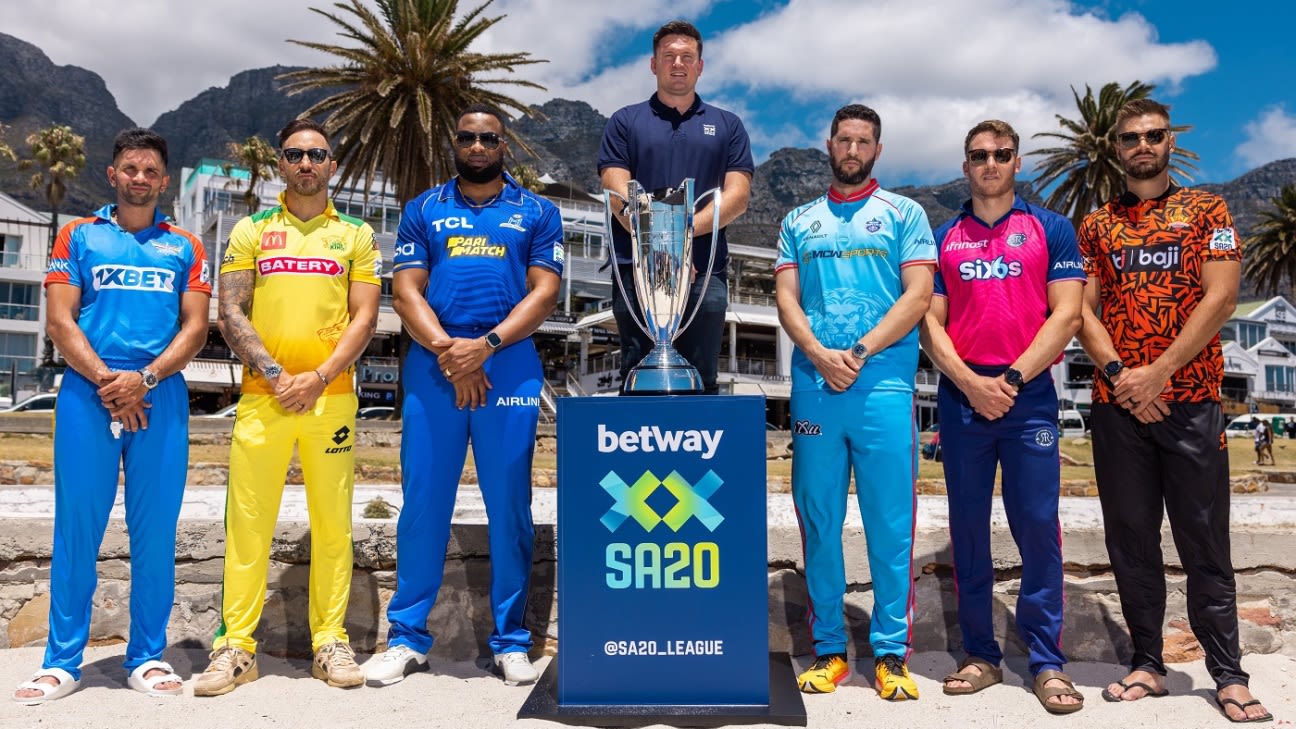“If you take a step back, we are a majority-based South African league. The majority of our players in playing XIs are South African. We are blessed to be able to attract top international talent who want to play here,” he said. “When we were building SA20, there was no confidence in South Africa cricket that we were able to pull it off at this level.
“But we have done that. FTPs [Future Tour Programme for international cricket] are tough. Noor Ahmad got pulled out the day before the playoffs because he was selected for Afghanistan. But if we look at what we’ve created in two years – it’s amazing. We’ve gone from a place where international talent hasn’t backed our league, to where they want to be a part of it.”
The SA20 was South Africa’s third attempt at a franchise T20 tournament – after the Global League T20 was abandoned in 2017 and the Mzansi Super League failed to secure a broadcaster – and has, so far, been a resounding success despite schedule clashes and a direct competitor in the UAE’s International League T20, which runs concurrently.
However, Smith has always underlined that the major difference between the SA20 and the ILT20 is player composition, with South Africa drawing from an existing talent pool – this season only 37 out of the 99 players who featured in at least one match were foreign – while the ILT20 is made up mostly of an overseas contingent. And that, he says, is why league overlaps will affect the ILT20 more. “The challenge with ILT20 is they are consuming nine or ten international players per playing XI plus squad members, so it’s a lot of players to keep the ship moving.”
Another concern for both leagues is a potential clash with next year’s Champions Trophy, which the FTP has pencilled in for mid-February to early March. Although the SA20 concludes by February 10, South Africa are due to play a triangular ODI series in Pakistan ahead of the tournament and there is also the possibility that the SA20 will clash with the preparation window for other national teams. Might that mean a shift for the SA20 dates? “We will have to consider everything,” Smith said. “The Champions Trophy dates are not set in stone. We will work with the ICC and CSA and once we’ve got confirmed information we can make informed decisions.”
Should there be a direct clash, it will be the third time in as many seasons that the SA20 will be affected by international cricket. In the first season, the SA20 had to take a break to accommodate South Africa’s must-play World Cup Super League ODI series against England. In the second season, it had far bigger impact because it clashed with a two-Test series in New Zealand and because South Africa’s first-choice players were legally obliged to compete in the SA20, a makeshift Test squad was selected.
While CSA tried to negotiate with New Zealand Cricket to find better dates, the overwhelming feeling in South African cricket, and it seems from the SA20, is that more should have been done to ensure the Tests were moved. “This scheduling issue should never have happened,” Smith, who considers himself a lover of Test cricket, said. “It’s disappointing. We are disappointed at what has happened. And we need to work together to make sure it does not happen again.”
Smith was also quick to point out that CSA is not the only board battling to ensure they have their best players available all the time. He used West Indies as his strongest example of another. “The challenges are much deeper than this scheduling issue. We heard (CWI CEO) Johnny Grave speak after an incredible Test win (in Australia) and they lost over a million dollars on that trip,” Smith said.
“These discussions need to be happen at bilateral level,” Smith said “You only earn money when you are hosting tours. India plays more cricket than anybody else but with touring, a lot of other teams earn good revenue. But outside the top three – how does an SA or a WI keep all three formats strong?”
Firdose Moonda is ESPNcricinfo’s correspondent for South Africa and women’s cricket
